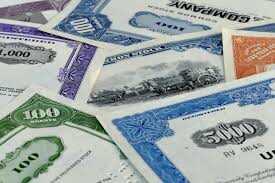Introduction
You are not alone in your confusion over what to do with a stock certificate after discovering it or inheriting one. Unlike electronic equities, physical shares may be harder to buy and sell, and an investor may never be able to redeem them if, for instance, the company goes out of business. The use of antiquated stock certificates is common. In the past, purchasers of stocks received "bearer certificates." Since most stocks are now held digitally in your firm's computer system, physical stock certificates are increasingly unusual. Knowing where to look up the value of a lost certificate is vital.

A Detailed Guide on Redeeming Outdated Stock Certificates
Millions of dollars in unclaimed funds are held each year by the United States government. Uncashed dividends and stock options from years ago are among such assets. Old stock certificates have been discovered in some people's attics. The acquisitions were once a major reason for celebratory self-reflection. The owners might have put them in a drawer and forgotten about them over the years.
If you've inherited some property from a relative, you might want to check the attic for any old stock certificates they may have stashed there. There's the possibility that old stock purchases have been forgotten. A lot of money might be made from this discovery. This could happen if the certificate is a sought-after collectable or has lost its worth. Guess what if you happen to come into possession of, or come across, any old stock cards? Discovering their worth and making a profit is not as difficult as you would assume. Nonetheless, be patient.
Steps to Take Before Cashing in Your Old Stock Certificates
Determine first if the issuing corporation is still in business. You can accomplish this in the comfort of your home or at the local library. You might be in luck if it comes from a reliable source. You have completed your study. Please proceed to Investor Relations. If not, investigate more. Using a free website to learn about a company on the internet is better. Several companies maintain databases on publicly traded organizations. The Wall Street Journal, Yahoo! Finance, and Dun & Bradstreet are a few examples of such sources.
Put the company name listed on the stock certificate into the "Firm/Business" search bar. It doesn't take long to see returns once the business is up and running. The next step is to study dated stock certificates. Verify the stock certificate's validity first. Stock certificates bearing the names of beneficiaries are genuine. Both the seal and the signature must be complete. Any punches or stamps should not cover the signatures and seals on the certificate. The backs of certificates must be spotless.
It is acceptable to stamp, sign, or seal the reverse of the certificate. If that's the case, then the stock must have been sold. Hole punching or a front stamp will be added to the certificate. It's no longer accepted as currency. However, there is a way to make money off of cancelled instruments.
Discovering Long-Defunct Businesses
Prepare a trip to the library for research. Doing your stock research requires a firm grasp of basic securities concepts. Folders can be moved around in the library. The past of a company can be investigated. There are online resources that provide free access to company data. In comparison to DIY, this option saves money.
Information like this can be found in the library's reference section. The Directory of Defunct Securities is available. Securities Valuation and Worthlessness Reference Manual could be useful. Investigate past events at the company. Keep going until you locate a business that is currently operating. To whom the stock certificate may be returned is up to you. It's a really slow and boring procedure. Find a way to get some assistance at some point. Brokers may do the legwork for you. Without such a resource, you can hire a discount brokerage to perform the necessary investigation on your behalf for a price.
Corporations and individuals alike are interested in researching old stock certificates. Searching for stock certificate information will set you back between $25 and $50. Time is saved by the transfer agent when stock certificates are researched. Their efforts may speed up the handover of the property.
Getting Closer to the End
You are familiar with the company and its CUSIP number. It's possible to get money out of your old stock licenses. The contact information for the stock's transfer agent can be found on the back of your stock certificate. The data on an old stock certificate may be inaccurate. To locate a representative, please get in touch with the company's shareholder services department.
Few companies employ a transfer agent full-time. Get in touch with the business's transfer agent. The procedure for returning stock certificates is detailed. The transfer agent will let you know if your stock certificates are cashable. Share ownership must be verified.
Share certificates cannot be redeemed for cash. Stocks are typically issued to people. However, they may be passed down through generations. The payment processor will ask for proof of probate if you claim the certificate as an inheritance. Once you're officially the owner, you have complete freedom.

Completing the Transaction
As soon as the transfer agent receives the form, they will contact you to have you fill it out. The form for transferring stock certificates is included. Legally, the form is notarized only when two parties sign it. After that, you should send your old stock credentials to the relevant transfer company. Your stock broker will notify you once they have received your old stock certificates.
Conclusion:
As indicated above, stock certificates sometimes appear legitimate but worthless or have been cancelled. Don't give up if you discover your stock is worthless. Even now, there are still stocks that collectors would pay a pretty penny for. True lovers of antiquity often seek relics such as stock and bond certificates.




